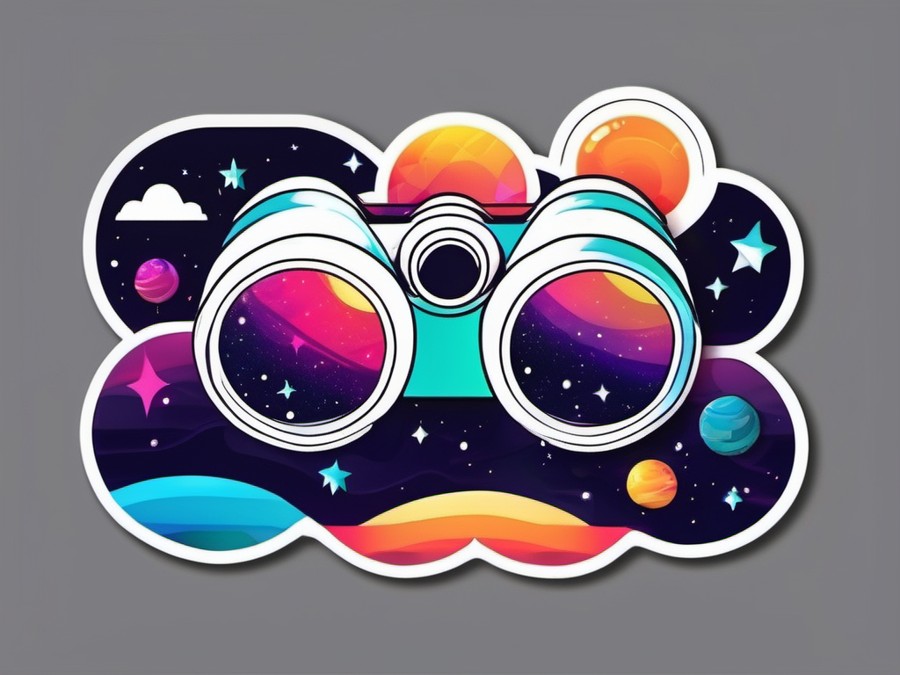· Charlotte Will · Binocular Accessories · 8 min read
What is a binocular tripod adapter and how does it work?
Discover how a binocular tripod adapter can enhance your viewing comfort and stability. Ideal for long observations, wildlife viewing, and photography, learn how to choose the right adapter, set it up, and maintain it for optimal results. Transform your experience with this essential tool today!

Ever been out in the field, trying to take a crisp view or photo through your binoculars, and wished you had an extra set of hands to steady them? That’s where a binocular tripod adapter comes in. This simple yet powerful tool can enhance your viewing experience and make those perfect shots a breeze. Let’s dive into what it is, how it works, and why you might need one.
Why Use a Binocular Tripod Adapter?
Imagine sitting on a rocky outcrop, binoculars poised towards a distant bird of prey. After some time, the weight starts to tire your arms. A binocular tripod adapter secures your binoculars to a sturdy tripod, providing enhanced viewing comfort and stability. This is particularly useful for long observation sessions, making it a game-changer for nature enthusiasts and photographers alike.
Understanding the Basics
What is a Binocular?
A binocular is an optical instrument designed for two-eyed viewing, typically used to magnify distant objects. It consists of prisms and lenses that bring the image into focus for your eyes.
What is a Tripod?
A tripod is a three-legged stand used to support and stabilize various equipment, including cameras and binoculars. The legs can be adjusted for different heights and terrains, providing a secure base for steady viewing.
How They Work Together
Attaching your binoculars to a tripod using an adapter allows you to steady the image and reduce hand shake, which can otherwise blur your view or photograph. This combination is particularly effective in situations where stability is crucial, such as wildlife viewing or stargazing.
The Purpose of a Binocular Tripod Adapter
The primary role of a binocular tripod adapter is to provide a secure connection point between your binoculars and the tripod. This enables hands-free observation, freeing up your hands to make notes, take photos, or simply enjoy a cup of coffee while you watch.
Key Components of a Binocular Tripod Adapter
The Adapter Body
The body of the adapter is typically designed to fit snugly around your binocular’s objective lens or central hinge. It might be made from sturdy materials like metal or durable plastic to ensure a secure grip and longevity.
Mounting Hardware
Most adapters come with mounting hardware such as screws or clamps that attach to the tripod. This ensures a stable and secure connection, preventing any accidental slips or falls.
Compatibility Factors
Not all adapters are created equal, so it’s crucial to consider compatibility with your binocular model and tripod type. Many adapters come with adjustable mounts to accommodate different sizes and shapes.
How to Choose the Right Adapter
Considering Binocular Size and Weight
Different adapters are designed to support varying weights. Make sure to choose one that’s suited for the size and heft of your binoculars. This will ensure optimal stability and prevent any strain on the adapter or tripod.
Tripod Compatibility Checks
Before buying, check if your tripod head is compatible with the adapter. Some adapters come with specific mounts that fit different tripod head types.
Material and Durability
Opt for adapters made from high-quality materials that can withstand the elements and regular use. This will ensure your investment lasts longer, providing a better return on investment.
Setting Up Your Binocular Tripod Adapter
Step-by-Step Installation Guide
- Attaching the Adapter to Your Binoculars: Securely fasten the adapter around your binocular’s central hinge or objective lens depending on the design.
- Securing the Binoculars to the Tripod: Mount the adapter onto your tripod using the appropriate hardware. Ensure everything is tight and secure to prevent any movement.
- Ensuring Stability and Steadiness: Adjust the tripod legs to different heights to achieve a stable base on uneven terrain. This will help reduce any vibrations and improve the steadiness of your view.
Advantages of Using a Binocular Tripod Adapter
Reducing Fatigue During Long Observations
Holding your binoculars for extended periods can lead to arm fatigue. With a tripod adapter, you can observe comfortably for longer, making those marathon birdwatching sessions a lot more enjoyable.
Enabling Better Focus and Clarity
By minimizing handshake, a tripod adapter allows for clearer observations. This is particularly beneficial for those who need precise focus, such as astronomers or serious nature photographers.
Improving Photography Results
For those who love to capture what they see, a stable setup can significantly improve your photos. It eliminates the blur caused by hand movements, resulting in sharper and more detailed images.
Common Misconceptions About Binocular Tripod Adapters
Debunking Myths: Are They Only for Professionals?
Many people think that binocular tripod adapters are only for professionals. The truth is, anyone can benefit from the added stability and comfort they provide. Whether you’re a seasoned birder or a casual nature observer, an adapter can enhance your experience.
Addressing Concerns About Complexity and Ease of Use
Some might be deterred by the perceived complexity of setting up an adapter. However, most adapters are designed with user-friendliness in mind and can be set up quickly and easily with minimal fuss.
Popular Use Cases
Wildlife Observation and Birdwatching
When you’re tracking elusive birds or observing wildlife, stability is key. A binocular tripod adapter allows you to keep a steady eye on your subject without the distraction of arm fatigue.
Astronomy and Stargazing
For those who love to gaze at the stars, a stable setup can make spotting celestial bodies much easier. A tripod adapter helps you keep your binoculars trained on the night sky without any wobble.
Nature Photography
As a nature photographer, having a steady platform to take photos is crucial. A binocular tripod adapter allows you to capture clear and detailed images without the blur that comes from handheld shots.
Comparisons of Popular Binocular Tripod Adapters
Overview of Top Models on the Market
There’s a wide range of binocular tripod adapters available, each with its own set of features. Some popular models include those from Nikon, Celestron, and Konig & Meyer. Each of these offers unique advantages depending on your specific needs and preferences.
Key Differences and Unique Features
Some adapters come with additional features like quick-release mechanisms for easy attachment and detachment. Others are designed to be lightweight and portable, making them perfect for those who frequently travel with their gear.
Tips for Maintaining Your Binocular Tripod Adapter
Cleaning and Care Instructions
Regularly clean your adapter to remove any dirt or debris that could interfere with its functionality. Use a soft, damp cloth and mild soap to gently wipe it down. Avoid using harsh chemicals that could damage the material.
Storage Tips for Longevity
Store your adapter in a dry, cool place to prevent any damage from moisture or extreme temperatures. It’s also a good idea to keep it in its original packaging or a protective case when not in use.
Real-Life Examples and Success Stories
User Experiences: Enhanced Nature Viewing
Many users report a significant improvement in their viewing experiences after incorporating an adapter into their setup. For instance, birdwatchers often find that they can spot more species and enjoy longer sessions without the discomfort of holding their binoculars for extended periods.
Anecdotes from Professionals and Enthusiasts
Professional nature photographers also swear by the stability that a binocular tripod adapter provides. They attest to capturing better-quality photos and being able to focus on the shot rather than worrying about their hand’s steadiness.
FAQs About Binocular Tripod Adapters
What if my binoculars don’t have the standard tripod socket?
Many adapters are designed to accommodate various binocular models, but it’s essential to check compatibility before purchasing. Some adapters come with adjustable mounts that can fit different sizes and shapes.
Can I use any tripod with my binoculars?
While many adapters are universal, it’s best to ensure that the tripod head can support the weight of your binoculars for optimal stability. Lightweight binoculars may not require a heavy-duty tripod, while larger ones might need a sturdier support system.
How do I clean my binocular tripod adapter?
Gently wipe it with a soft, damp cloth and mild soap. Avoid using harsh chemicals that could damage the material. Regular cleaning will help maintain its functionality and longevity.
What is the best way to store my adapter when not in use?
Store it in a dry, cool place, preferably in its original packaging or a protective case to prevent dust and moisture buildup. This will help keep it in good condition for your next use.
Are there any adapters specifically designed for heavier binoculars?
Yes, there are adapters engineered to handle heavier optics. Look for ones with sturdy materials and reinforced connections for added durability. Some high-end models are built to support even the largest and most heavy-duty binoculars.
Conclusion
Incorporating a binocular tripod adapter into your observation setup can significantly enhance both comfort and viewing experience. Whether you’re an avid birdwatcher, stargazer, or nature photographer, finding the right adapter can make all the difference. Don’t miss out on the opportunity to enhance your viewing stability and precision—give a binocular tripod adapter a try today!
This article aims to provide comprehensive insights into the world of binocular tripod adapters, covering all aspects from their purpose and benefits to real-life applications and maintenance tips. By diving into the intricacies of these essential tools, you’ll be well-equipped to make an informed decision and elevate your viewing experience. Happy observing!




